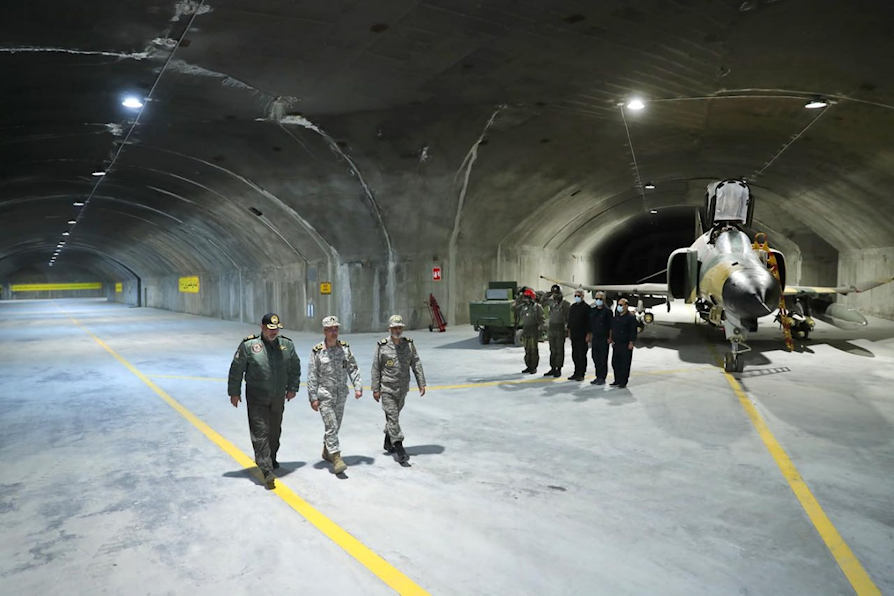As the world simmers in tensions caused by the long waves of the Russo-Ukrainian War, the Islamic Republic of Iran is also working hard to upgrade its military capability. Particularly noteworthy is the announcement, dated February 7, 2023, with which the Iranians revealed to the world the inauguration of a new underground base called Oghab 44 (translatable as "Aquila 44").
That it was an event by no means secondary is demonstrated by the fact that the most important members of the country's military apparatus were present at the event and that this visit had wide coverage in the Persian media. In fact, it is noteworthy that, among those present, there were also the Chief of Staff of the Armed Forces of the Islamic Republic of Iran, Major General ("Sardar") Mohammad-Hossein Bagheri, from Islamic Revolutionary Guard Corps (Pasdaran) and the commander in chief of the Regular Armed Forces (“Artesh”), Major General (“Amir”) Sayyed Abdolrahim Mousavi, instead coming from the Artesh Ground Forces (NEZAJA).
For those who are not accustomed to complex Persian Byzantinisms, it must be remembered that the Armed Forces in Iran are made up of three distinct and at the same time complementary components: the Regular Armed Forces (Artesh), the Islamic Revolutionary Guard Corps (Pasdaran) and the Disciplinary Force (Police). These components, each autonomous and equipped with its own separate hierarchy, are coordinated by a single general staff which obeys the directives of the Supreme Leader of the Islamic Republic of Iran, Ayatollah Seyyed Ali Hossein Khamenei, who delegates ordinary management functions to the Chief of Staff of the Armed Forces, who in practice is a general of the Pasdaran.

The first officer to hold this position was, between 1989 and 2016, Major General Sayyid Hassan Aghaee Firouzabadi who was succeeded by the current Mohammad-Hossein Bagheri.
During the ceremony, the senior Iranian officers inspected, always under the watchful eye of the cameras, the infrastructure of the base such as the aircraft hangars, the center for repairs and technical maintenance, the fuel and ammunition depots, the command post, etc...
In the frames published by the Persian state media one can recognize, among others, the F-4 jets Phantom II of the Air Force and kamikaze drones Arash-2 (the latter, it is rumored, are even coveted by Russia) which should instead be under the control of the Pasdaran.
It is interesting to note that the F-4s framed by the cameras (the author of this article has identified at least 5) have all been updated according to the "Dowran" program which aims to make the Phantom competitive Iranians until 2040. The fact that they are up-to-date aircraft can be seen from the armament hooked onto the external pylons (among other gliding bombs Yasir and anti-ship missiles Nasr-1) and the fact that they are all decorated with the IACI (Iran Aircraft Industries) logo near the air intakes (IACI is in charge of carrying out the update of the Phantom and decorates the aircraft with its logo at the end of the work).
The base has a high degree of sophistication and survivability and, according to Israeli analysts, is located 120 kilometers northwest of the port city of Bandar Abbas.
 Indeed Oghab 44 it is not the first underground base that the Iranians reveal to the world since they had already previously revealed another one called Badr 313 especially the use of drones.
Indeed Oghab 44 it is not the first underground base that the Iranians reveal to the world since they had already previously revealed another one called Badr 313 especially the use of drones.
The fact that for at least 9 years Iran has been investing massively (with the probable technical contribution of North Korea) in the construction of these large underground bases indicates that the country of the ayatollahs has fully implemented the tactical-strategic dictates based on the which, should the day come for a large-scale conflict to break out in the Middle East, the country would rely heavily, if not entirely, on its asymmetric military capabilities to withstand the brunt of far more technologically advanced enemies.






















